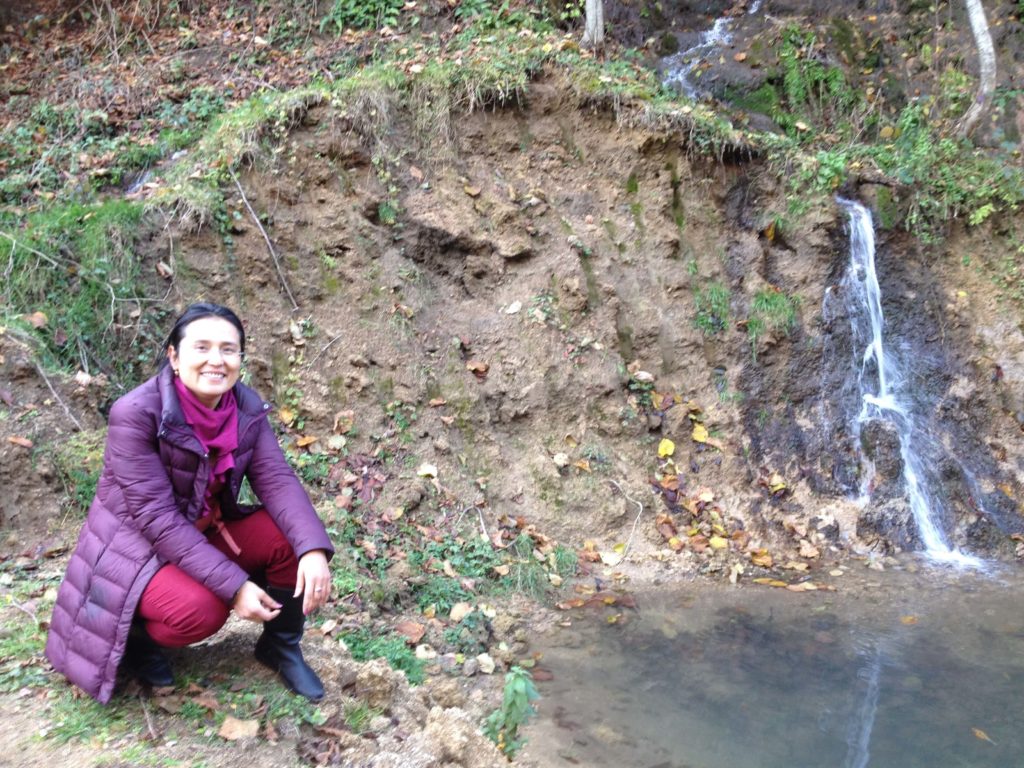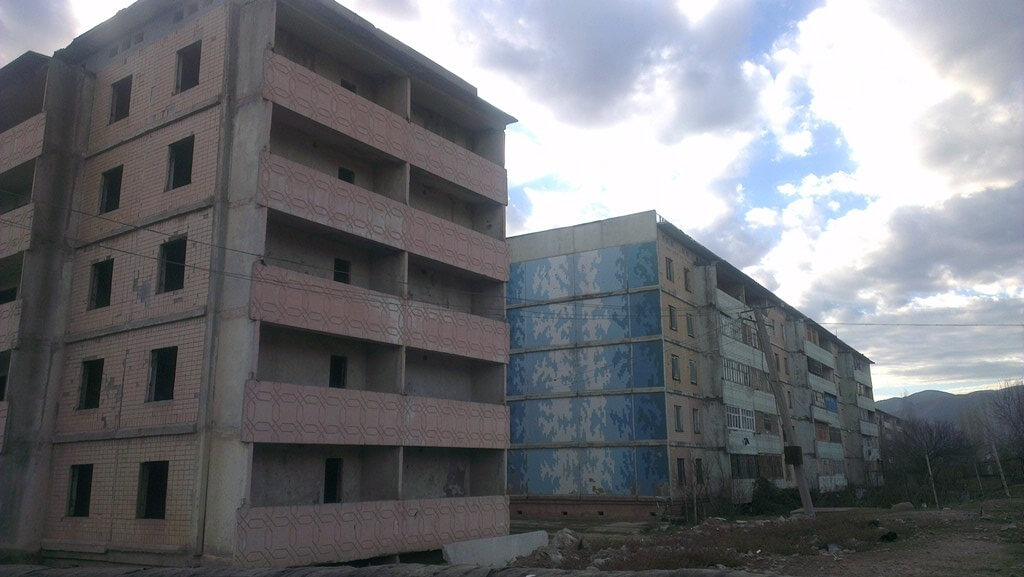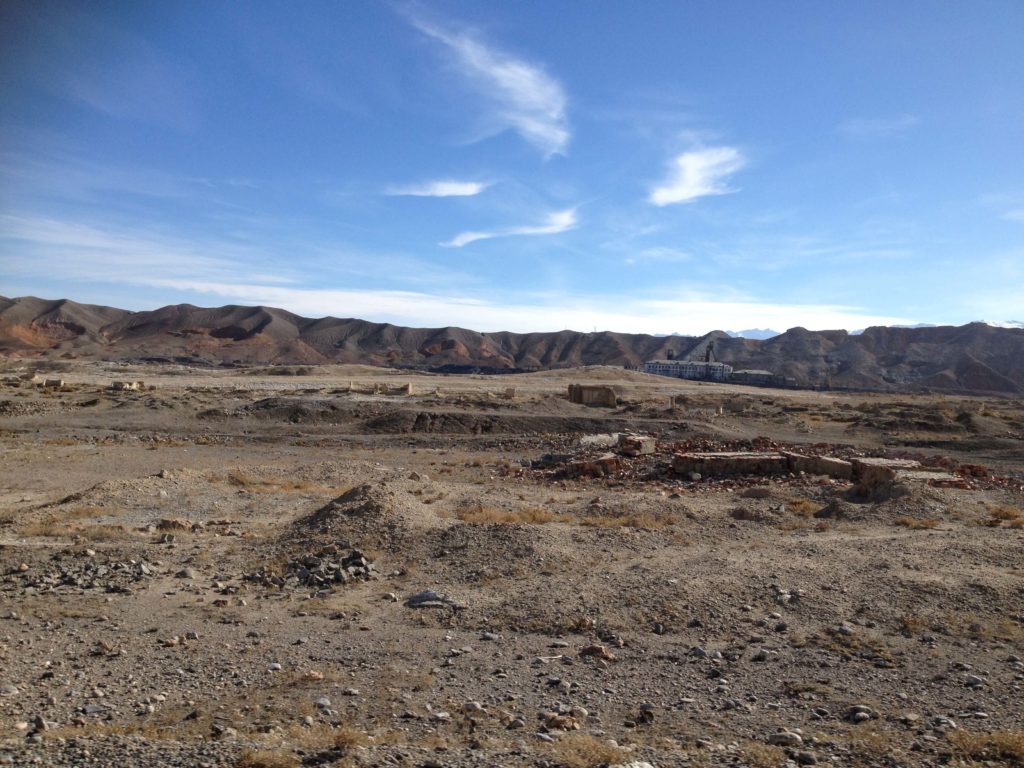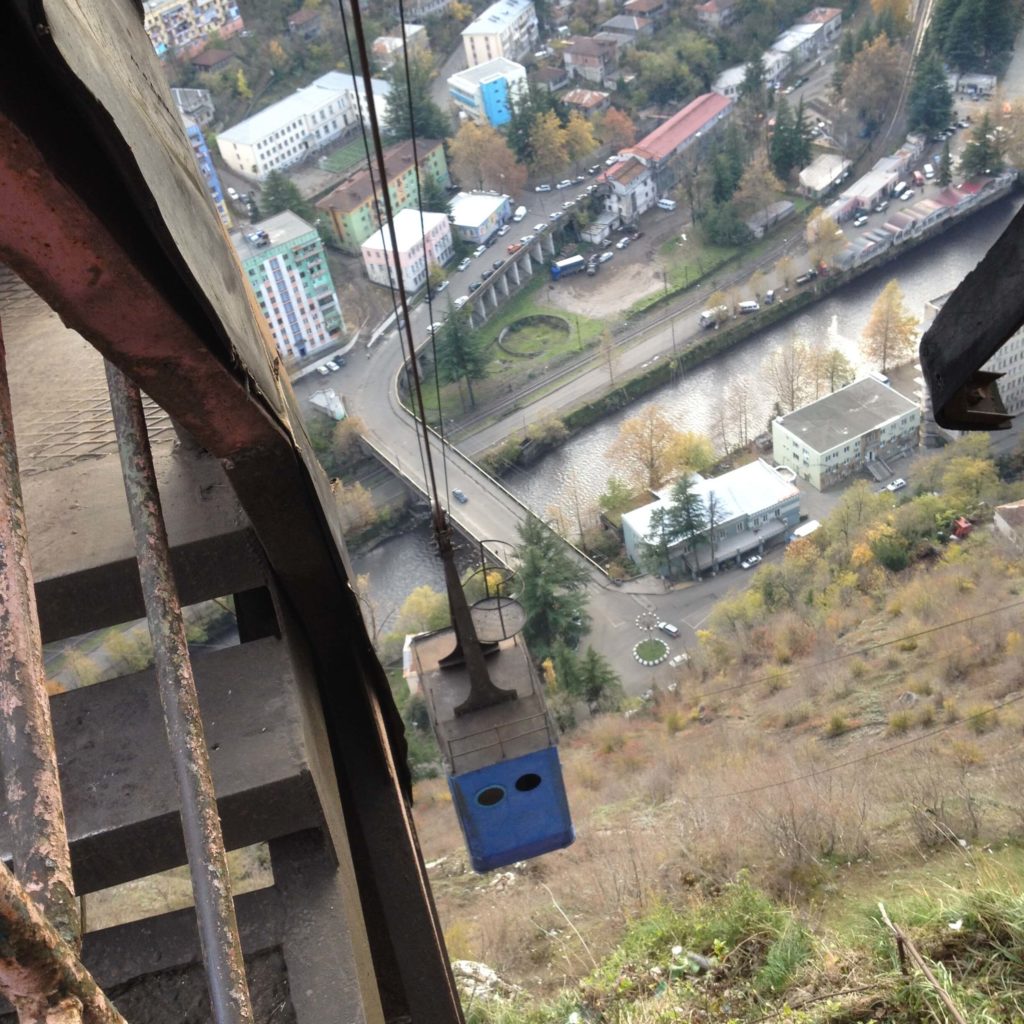Emptiness of Post-Soviet Mining Cities
Dr Rano Turaeva is a habilitating candidate at the Ludwig Maximillian University of Muenchen and an associated researcher at Max Planck Institute for Social Anthropology in Halle Saale, Germany. She has written and published widely on migration, entrepreneurship, informal economies, gender, border studies, identity, and inter-ethnic relations. The book Migration and Identity in Central Asia: The Uzbek Experience is based on her PhD thesis, and she co-edited Labour, Mobility and Informal Practices in Russia, Central Asia and Eastern Europe: Power, Institutions and Mobile Actors in Transnational Space. She is currently working on a second book on Migration and Islam in Russia. Her research includes the topic of emptiness in post-Soviet mining cities, which she discusses below.

The Soviet government exploited natural resources and human resources with little consideration of the environments in occupied lands, and transformed whole regions, cultures, nations and economies. Maximal industrialisation of the Soviet Republics was enabled through accelerated labour recruitment, education, building infrastructure, and whole new cities and settlements in the newly occupied Soviet territory. Mining was the most targeted sites for industrialisation and urbanisation and this went hand in hand with the promotion of Soviet-style modernity (sovremennost). A city such as Shurab in Tajikistan was built around a coal mine in 1952, while Janatas in Kazakhstan was constructed around phosphate mines in 1964, and Chiatura in Georgia – where manganese was found in the 19th century in Tsarist times – was rebuilt by the Soviets in the early 1900s in order to extract this precious resource. Strategic cities also received special Moscow attention under the separate channel of moskovskoe obespechenie (Moscow provisioning). Through this channel special products and services were delivered directly from Moscow to the strategic cities in the Republics. These cities then became attractive to a wider public who came to work, to shop, or just to have a short holiday, as these cities had been built not only with basic infrastructure, but also to be attractive to live in, with rich cultural programs and entertainment facilities. The average working-class Soviet citizen or engineer was eager to move to and work in these newly built mining cities in order to enjoy the privileges of relatively high wages, special consumer goods, and a well-developed social and cultural infrastructure.
After the collapse of the Soviet Union it became apparent that such mining cities and similar industrial complexes were organized so that supply and trade were dependent on the purchase contracts of other industries in other Soviet Republics. The end of the Soviet Union also meant the end of provisions from Moscow. The economic webs were cut as newly independent Republics struggled to build up their economies autonomously. After the end of the Soviet Union, economic units and industries were left to function on their own, relying on local and national resources and governance. Most industries which were under Soviet state control were either privatised or taken under the control of newly independent post-Soviet states. Cities with low value or less important raw materials were hit harder than others which still offered attractive products such as oil, gold, and fertilisers. Former cities which found themselves uncompetitive in an open market functioned at only 5% of operations during the Soviet Union. This led to the economic collapse of these cities, to massive demographic change due to outmigration, and consequently to infrastructural decay. Prosperous during Soviet times and now ghost towns, emptiness is a post-Soviet reality for many cities which enjoyed moskovskoye obespechniye during Soviet rule.

Newly independent post-Soviet economies, which were mismanaged or suffered from corrupt authoritarian regimes that continued Soviet-style governance, faced both economic collapse and political conflict. This led to mass outmigration, most obviously from formerly prosperous mining cities. The demographic change resulting from outmigration, the downsizing of most Soviet-built industries, infrastructural decay, economic collapse, and the fading out of state presence and state social support: these factors were the basis of the visual and discursive results of emptiness (Nasritdinov 2015). Emptiness filled not only the cityscapes of the ghost cities but also the content of important fields, both material and non-material. Empty buildings – at times high-rise buildings towering next to each other in their magnitude – were a reminder of the great past, while their current emptiness showed the empty and impoverished present. Eventually emptiness filled the promises of the new post-Soviet states in the eyes of the ghost cities’ residents. Empty houses, empty places filled with ruins, empty pipes with no water, empty budgets with no money, empty bank accounts, or the empty pockets of the residents of ghost cities: each manifestation of emptiness pervaded a certain atmosphere and attitude among the residents. Mixed feelings arose about the great past and poor present, which was meanwhile riven between efforts to survive and a hopeless existence.
Emptiness was not only the concern of those who had to make ends meet and to make sense of the places in which they lived. The ruins which filled the emptiness impacted the natural and physical wellbeing of both the living and non-living beings of the cities. Ruined buildings, infrastructure, and nature (in form of dark, black-coloured rivers and air pollution); the ruined health of living beings in these locations: ruins of everything filled the emptiness. The empty flats and houses created further problems, adding to the process of the general infrastructural decay and compromising water supply and heating systems, particularly in the five- or nine-storied apartment buildings in all of the three cities that I describe below. The average occupancy rate of these houses has fallen to approximately five to 10 percent.
Such ghost mining cities are by now found not only in the post-Soviet space but also in the West, in the USA, Germany, and in China where deindustrialisation has turned cities largely into ghost cities (e.g. Bontje 2004, Pallagst et al. 2013). Mining cities where companies stopped working or reduced their capacities are found all across the former Soviet Union: in Russia, Georgia and Central Asia. The cities we studied within the framework of the project Mining Cities in Central Asia and the South Caucasus: Survival Strategies under Conditions of Extreme Peripheralisation (during 2015–20, coordinated by Leibniz Institute for Regional Geography in Germany) include Janatas in Kazakhstan, Shurab in Tajikistan, Chiatura in Georgia, and Angren in Uzbekistan (2015–16).

The results of this research are in the process of being published as an edited volume which will include working papers and policy briefs. Our research shows the wide array of residents’ economic survival strategies in these abandoned places. In Janatas, for instance, we witnessed informal economic networks based on mutual debt employed by inhabitants in order to afford basic foodstuff from small shops. In Shurab mardikor labour (informal labour) make up a large portion of local residents’ income, including the mine workers who are mainly hired on the basis of informal employment (cash-based and sales-based salaries). In Shurab, due to the absence of running water, water for all purposes has to be purchased and is the item on which most earned income is spent. In Chiatura, people survive partly by relying on state welfare, agricultural sustenance, and bank credits (even for normal daily expenses people borrow money from the local banks, creating another debt system popularised in Georgia) and by entrepreneurship. Still, mining has retained some importance – in spite of its economic and environmental hazards – while at the same time a diversification of revenue-generating activities and new forms of solidarity are emerging.

To give one example of such entrepreneurial efforts: in Chiatura an older man who worked all of his life for the state has spent the last 15 years devoted to making a small paradise corner out of the abandoned mountainous part of upper Chiatura. He discovered a very deep cave where he grew mushrooms and organised small ponds for growing fish. He has built a small infrastructure to enable him to stay in place, reliant upon his own efforts and with minimal investment. He recalled that he had to re-purchase the same land several times with each change of government and has not given up on the idea of making this cave an attraction for tourists while further developing his small business to make it profitable. He has an entrepreneur’s confidence in the local government which plans to make Chiatura into a tourist city and invest in the cable cars for which Chiatura is known.

The hope demonstrated by such entrepreneurial individuals in empty places such as Chiatura and in the other ghost cities we studied over the last several years is a broader token of hope for the many empty places across the post-Soviet space. It indicates that these places need more systematic engagement not only of the scholarly kind exemplify by the Emptiness project, but also by local politicians. Although Chiatura was one of the better places among the cities we studied, in other cities residents showed innovative efforts to survive and deal with the emptiness, each in their own ways.
References
Bontje, M. (2004) “Facing the challenge of shrinking cities in East Germany: The case of Leipzig”. GeoJournal 61(1), pp. 13-21.
Nasritdinov, Emil (2015) “Deurbanization: The ruins of the Soviet modernism in mining towns of Kyrgyzstan”. Cabar Asia. Online publication dated 20 Aug 2015: https://cabar.asia/en/emil-nasritdinov-deurbanization-the-ruins-of-the-soviet-modernism-in-mining-towns-of-kyrgyzstan, accessed 10 Oct 2018.
Pallagst, K., Wiechmann, T. and Martinez-Fernandez, C. (eds) (2013) Shrinking Cities: International Perspectives and Policy Implications. Routledge.